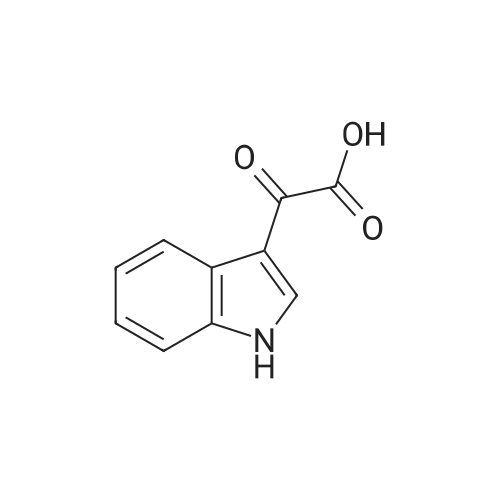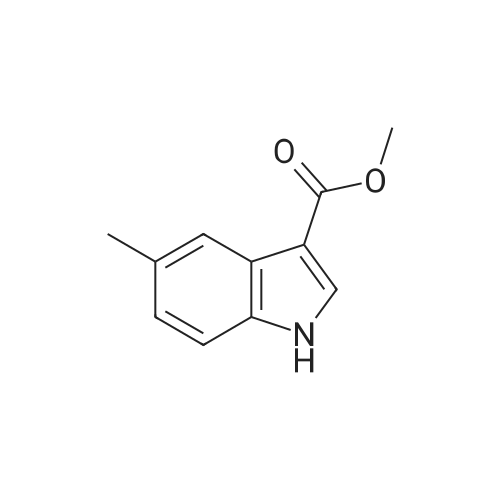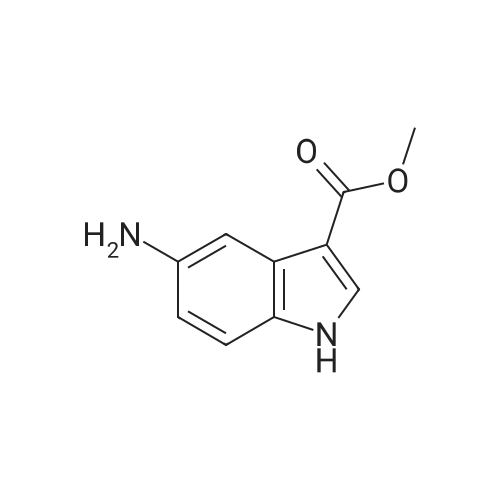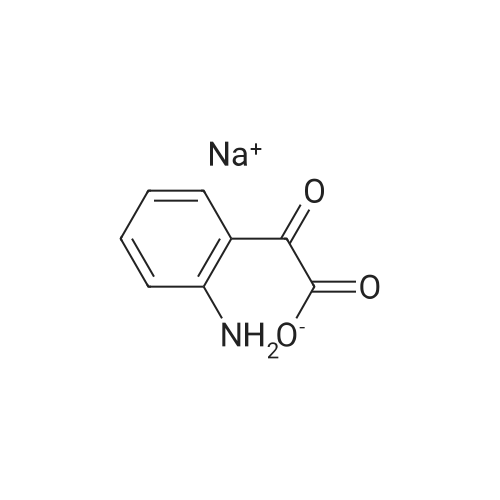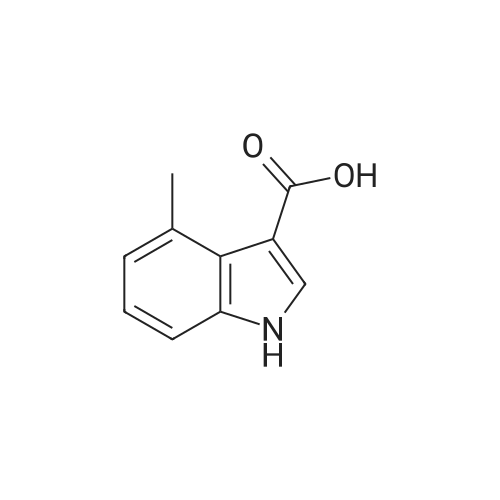| 90% |
|
A three-necked flask equipped with a magnetic stirrer and two addition funnels was charged with indole (10.1 g, 0.086 mol) and 100 mL of diethyl ether. Oxalyl chloride (7.3 mL, 0.086 mol) was added dropwise to the solution at 0 C under nitrogen in 0.5 h. Yellow precipitate were formed and the reaction mixture was stirred for another 0.5 h. The reaction mixture was cooled to -70 C by dry-ice, then sodium methylate (25 % solution in methanol, 37.3 g, 0.173 mol) was added dropwise to the reaction mixture in 1 h. After that the reaction mixture was warmed to 0 C and 50 mL of water was added. The precipitate were filtered, washed with water several times, and then dried at 60 C under vacuum. The product of methyl indolyl-3- glyoxylate was obtained as a yellow powder and used without further purification. Yield 90 %. A three-necked flask equipped with a magnetic stirrer and an addition funnel was charged with 3-indoleacetamide (8.0 g, 0.046 mol), methyl indolyl-3-glyoxylate (10.0 g, 0.049 mol) and 80 mL of tetrahydrofuran. A solution of potassium tert-butoxide (15.2 g, 0.135 mol) in 130 mL of tetrahydrofuran was added dropwise to the reaction mixture at 0 C under nitrogen in 1.5 h. Then the reaction mixture was warmed to room temperature and stirred for 3 h. A solution of Hydrochloric acid (35 % in water, 64 mL) was added dropwise to the reaction mixture in 1 h. Then 200 mL of ethyl acetate and 100 mL of water were added and stirred for dissolving. The organic phase was separated, washed with water several times until neutral, and then washed with brine once, dried over anhydrous sodium sulfate. The sodium sulfate was filtered and the solution was concentrated. The product was crystallized by adding a 1:1 (v/v) mixture of ethyl acetate and n-hexane dropwise to the concentrated solution at 50~60 C. The pure product of 3,4-bisindolylmaleimide was obtained as a red crystal. |
| 86.3% |
|
To a three-necked flask was added 3.0 g (0.026 mol) of indole,30 mL of anhydrous ether, stirring dissolved, control the temperature 0-5 oC,A solution of 3.4 g (0.026 mol) of oxalyl chloride in anhydrous ethyl ether (5 mL) was slowly added dropwise, followed by incubation for 1 h and then cooled to about -25 C,A solution of 16.3 g of sodium methoxide in methanol (17.5%, 0.052 mol)After dripping for 30 min, the reaction solution was poured into 100 mL of ice water, filtered, washed with water (3 x 10 mL)Dichloromethane (2 x 10 mL),Dried to give 4.5 g of a pale yellow solid 5a in a yield of 86.3% |
| 86% |
|
To a solution of 1H-indole (6.00 g, 51.2 mmol, 1.00 equiv) in Et20(60.0 mL, 0.850 M) was added oxalyl chloride (5.27 mL, 61.4 mmol, 1.20equiv) dropwise at 0 C. The yellow slurry was stirred at 0 C for 30mm and then cooled to -78 C. A solution of NaOMe in MeOH (25%, 23.0mL) was added to this slurry at the same temperature. The reaction mixture was then allowed to warm up to room temperature, and was quenched by addition of water (40.0 ml) . The precipitate was collected by filtration, washed with water and dried to afford the title compoundas a gray solid (8.96 g, 44.0 mmol, 86% yield).NMR Spectroscopy: 1H NMR (700 MHz, (CD,)2S0, 25 C, 5): 12.50 (s, 1H),8.44 (d, J = 3.2 Hz, 1H), 8.16 (d, J = 7.6 Hz, 1H), 7.55 (d, J 7.7Hz, 1H), 7.25 - 7.33 (m, 2H), 3.89 (s, 3H) . “C NMR (175 MHz, (CD3)2S0,25 C, 5): 178.7, 164.0, 138.4, 136.7, 125.5, 123.8, 122.9, 121.1,112.8, 112.4, 52.5. The ‘H NMR data were in good agreement with values reported in the literature (Ye, Q. et al. 2015) |

 Chemistry
Chemistry
 Pharmaceutical Intermediates
Pharmaceutical Intermediates
 Inhibitors/Agonists
Inhibitors/Agonists
 Material Science
Material Science













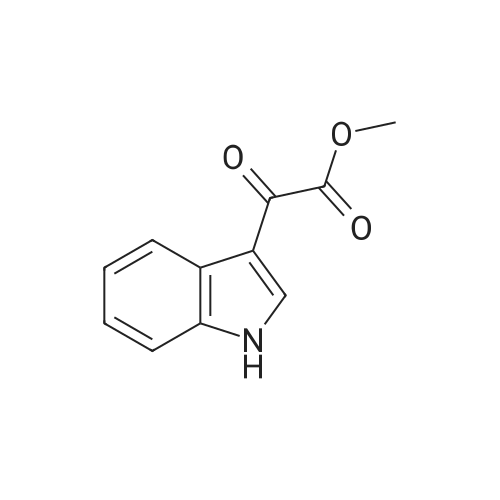

 For Research Only
For Research Only
 120K+ Compounds
120K+ Compounds
 Competitive Price
Competitive Price
 1-2 Day Shipping
1-2 Day Shipping














